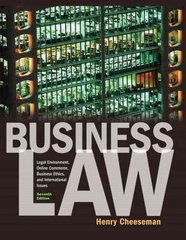Question
Q. Consider a small exchange economy with two consumers, Ann and Bob , and two commodities, hummus and cakes. Ann's initial endowment is 4 units
Q. Consider a small exchange economy with two consumers, Ann and Bob , and two commodities, hummus and cakes. Ann's initial endowment is 4 units of hummus and 1 unit of cake. Bob's initial endowment has no hummus and 7 units of cakes. Ann's utility function is U(HA,CA) = HACA. Bob utility function is U(HB,CB) = minHB,CB. (Here HA and CA are the amounts of hummus and cakes for Ann, and HB and CB are amounts of hummus and cakes for Bob.)
A. Draw an Edgeworth box, showing the initial allocation and sketching in a few indifference curves (using black ink for Ann's and blue ink for Bob). Measure Ann's consumption from the lower left and Bob from the upper right.
(b) Show the locus of Pareto optimal allocations in red. (Hint: Since Bob is kinky, calculus won't help much here. But notice that because of the rigidity of the proportions in which he demands the two goods, it would be inefficient to give Bob a positive amount of either good if he had less than that amount of the other good. What does that tell you about where the Pareto efficient locus has to be?)
(c) Suppose price of cake pC = 1 and pH denotes the price of hams. Show an expression for the amount of hams that Bob will demand at these prices.
(d) Suppose price of cake pC = 1 and pH denotes the price of hummus. What is the value of Ann's initial endowment? How much hummus will Ann demand at price pH?
(e) If it is competitive market, when the equilibrium makes, what condition does pH satisfied.
Step by Step Solution
There are 3 Steps involved in it
Step: 1

Get Instant Access to Expert-Tailored Solutions
See step-by-step solutions with expert insights and AI powered tools for academic success
Step: 2

Step: 3

Ace Your Homework with AI
Get the answers you need in no time with our AI-driven, step-by-step assistance
Get Started


